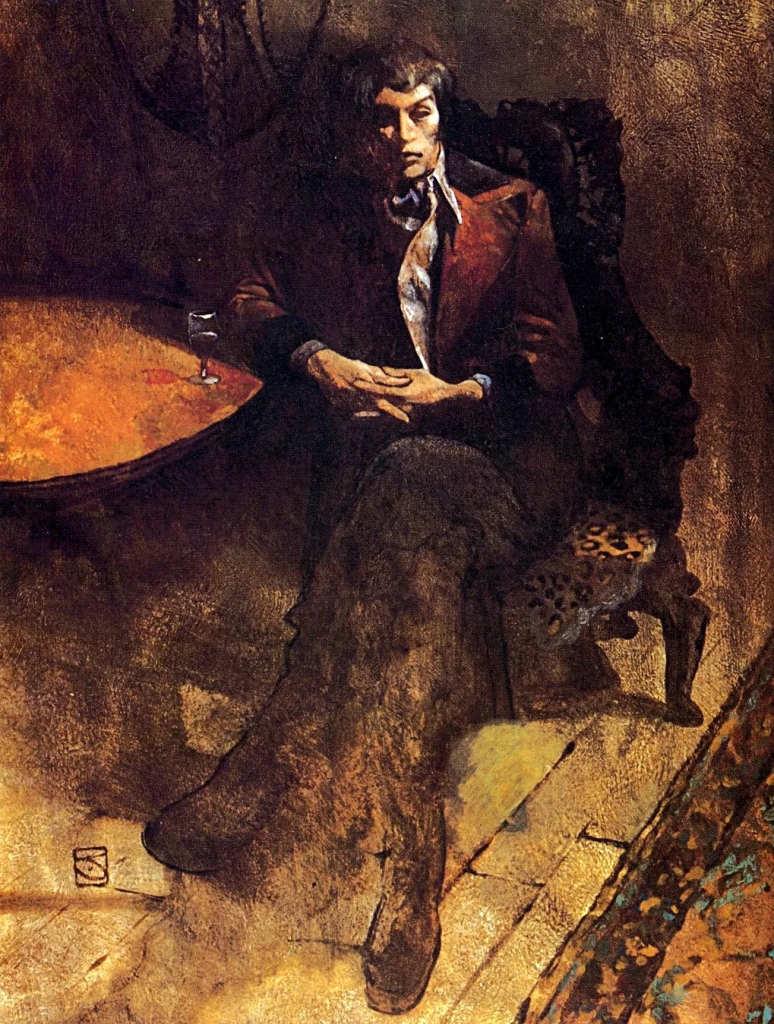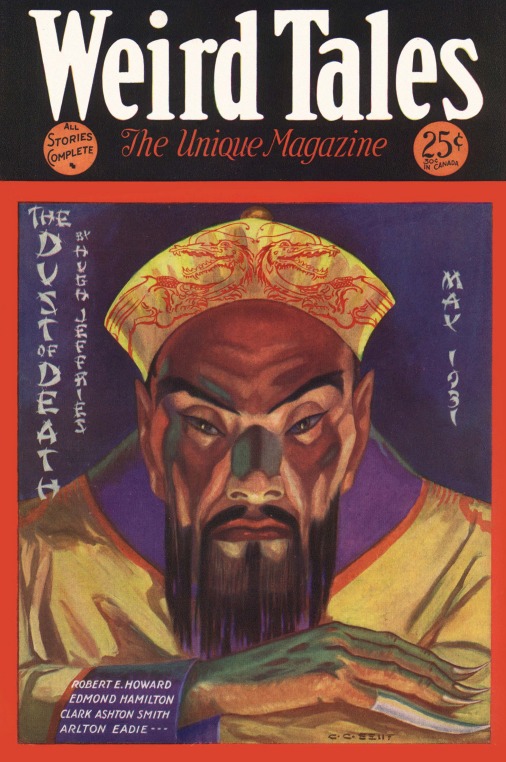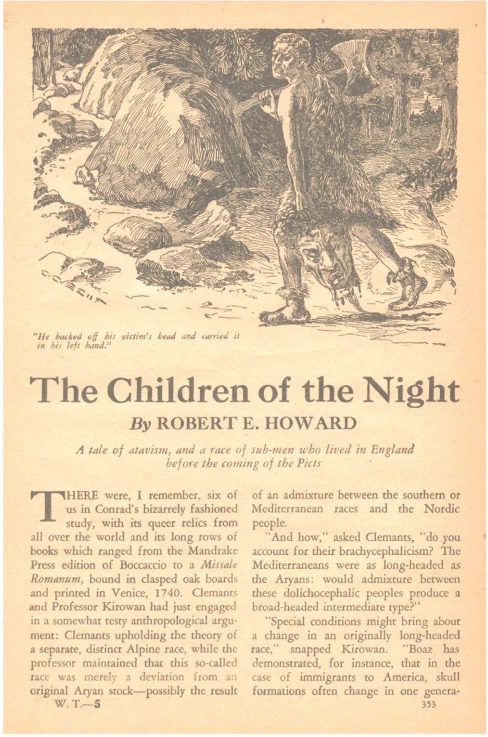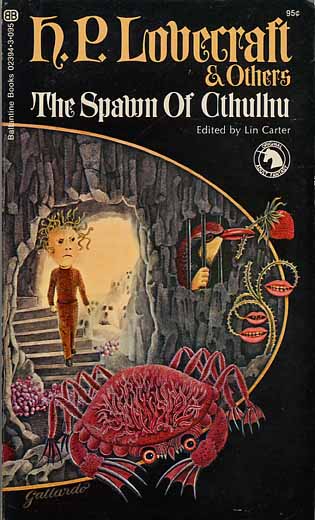by Gary Romeo
“The Children of the Night” was first published in Weird Tales, April/May 1931. It has been reprinted several times. It was included in Bran Mak Morn: The Last King, Ballantine (Del Rey) Books, 2005 since it features REH’s version of the Picts.
One of the numerous books that reprinted “The Children of the Night” was the Lin Carter edited The Spawn of Cthulhu, Ballantine Books, 1971. Certainly, Lin Carter’s finest hour was being the editor of the Ballantine Adult Fantasy series, but it shouldn’t be forgotten that Carter was an entertaining author in his own right. Many so-called fantasy “scholars” have demeaned Carter’s work. Carter was one of the most prolific writers and popularizers of fantasy in his day. Most of those that criticize Carter (for other than his self-destructive habits) are just fanboy malcontents that need to be firmly ignored.
Anyway, onward… the only textual difference I observed was that Weird Tales and Del Rey used an older spelling – “mediaeval” – whereas the modern reprints use “medieval.”
“Children of the Night” is both a “Pict” story and a Cthulhu Mythos story. I’m primarily interested in what the story says about “Picts.” The opening paragraphs are not my cup of tea. Lots of stuff about the “Alpine race” and “Aryan stock.” In my mind I picture a bunch of old well-dressed white guys with whom I have nothing in common.

The dialogue just adds to the picture. “And how,” asked Clemants, “do you account for their brachycephalicism? The Mediterraneans were as long-headed as the Aryans: would admixture between these dolichocephalic peoples produce a broad-headed intermediate type?”
The men continue their discussion, the author Arthur Machen is name-dropped. The narrator, John O’Donnel, thinks to himself that a fellow member of the club, Ketrick, isn’t quite white enough. O’Donnel had discussed this with Professor Hendrik Brooler, who remarked, “Ketrick was undoubtedly an atavism, representing a reversion of type to some dim and distant ancestor of Mongolian blood – a sort of freak reversion, since none of his family showed such traces.”
The men continue talking. Von Juntz’s Nameless Cults and later the Necronomicon are name dropped. H. P. Lovecraft is mentioned. (Probably the first time Lovecraft was mentioned in a fictional story. See Lovecraft: The Great Tales by John Haefele.) REH does a remarkable job setting a mood and shows off a well-read knowledge of poetry. He uses excerpts from the poem “Gates of Damascus” by James Elroy Flecker to imply that poets, like Von Juntz imply hidden messages in their poetry. My interest got peaked with the mention of a Bran cult. Below is a lengthy excerpt but it is important. REH, for the first time (I believe) differentiates between his Picts and the historical Picts in a subtle way.
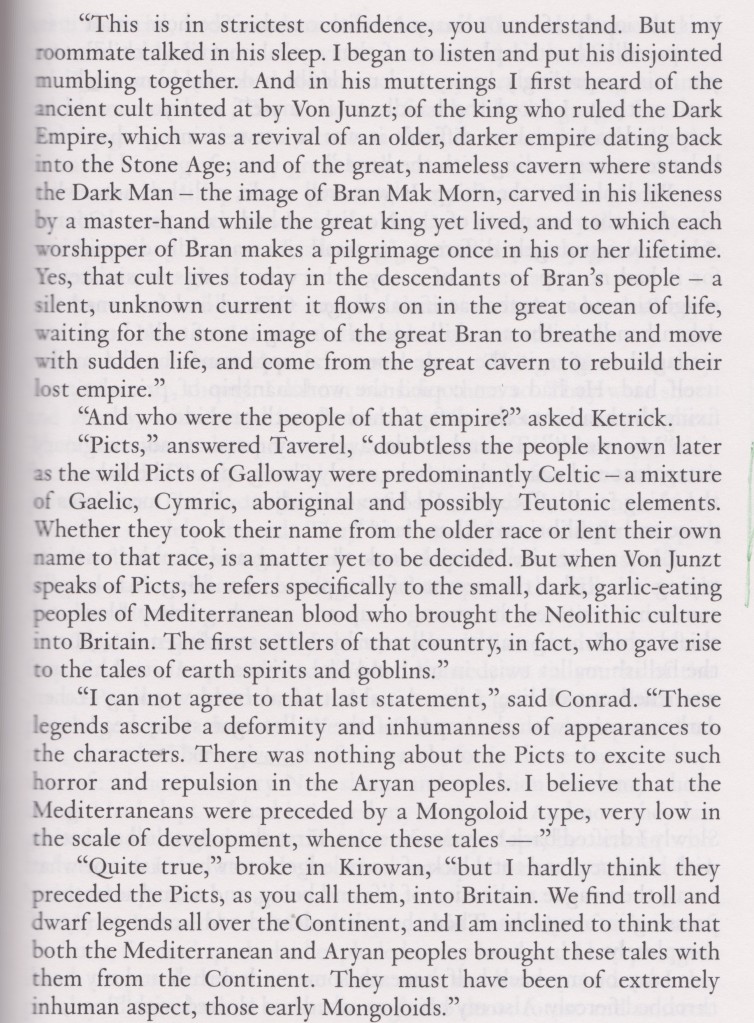
The line “Whether they took their name from the older race or lent their own name to that race, is a matter yet to be decided.” is important. REH shows that he is aware of readers possibly confusing his idea of Picts (derived from G. F. Scott Elliot’s book mentioned in previous articles) with the historical Picts of Scotland. He clarifies that Von Junzt’s Picts are his Picts (although REH’s idea of the “garlic-eating” people mixing with red-haired cave dwellers as mentioned in “The Lost Race” is ignored here.)
At this point the story shifts a bit. Ketrick accidentally (?) hits John O’Donnel in the head with a neolithic hammer and O’Donnell finds himself back in time facing his ancient enemy, the Children of the Night. I won’t recap the rest of the story. Read it for yourself. In the main, I think REH wants you to believe in O’Donnel’s vision, but there is the slight possibility that O’Donnel was brain-damaged by the hammer blow.
All in all, this a good story worthy of its many reprints.
